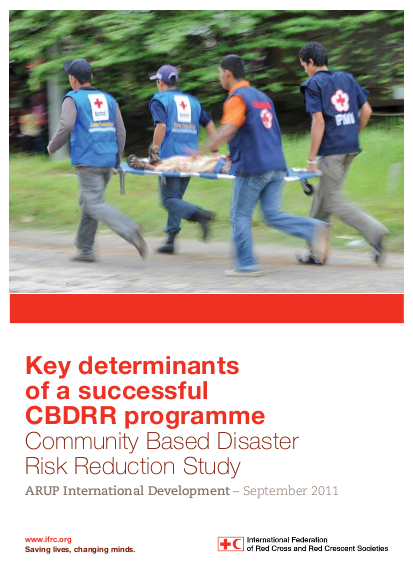
The International Federation of the Red Cross (IFRC), as the ‘world’s largest humanitarian and development network’ is committed to building safety and resilience through its Community Based Disaster Risk Reduction (CBDRR) programmes1. As a movement the Red Cross-Red Crescent (RCRC) has significant knowledge and experience of implementing CBDRR programmes. However, defining the aims and objectives of such programmes and the critical factors that influence their impact remains a challenge. This is particularly acute when comparing outcomes and approaches between communities, countries and regions. CBDRR programmes were carried out in over 700 communities as part of the Tsunami Recovery Programme (TRP) alone. The IFRC has identified this as an opportunity to ‘identify and document lessons learned in implementing at scale CBDRR2 projects to strengthen community safety and resilience….also [to] use its large evidence base to research new ideas and contribute to the wider efforts in improving CBDRR work within the IFRC’ (IFRC, 2010: 2). This research report on the Key determinants of a successful CBDRR Programme has been prepared by Arup’s International Development team (Arup ID)3 on behalf of the IFRC as part of a wider CBDRR Study of the TRP. Specifically, this report draws on the experience of the TRP CBDRR programmes and current literature in order to identify ‘the key determinants of a successful CBDRR project; including identification of the most effective interventions and services (also in terms of sustainability) in the context of these key determinants’ (IFRC, 2010: 3). It is intended that the key determinants developed through this research will be used in the design, monitoring and evaluation of future programmes. A first step towards this is the lessons learned report which provides a further output from this study. Other outputs of the study include a “who, what, where” database of RCRC CBDRR projects; a research report identifying the characteristics of a safe and resilient community.